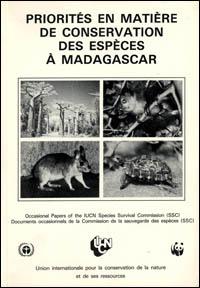

Related content
Site-level tool for identifying other effective area-based conservation measures (OECMs) : first edition (Khmer version)
Other effective area-based conservation measures (OECMs) are sites outside protected areas that deliver effective and long-term in situ conservation of biodiversity. Biodiversity conservation may be the primary objective of the site, a secondary objective of a site that is managed for other purposes, or it may be an unintended consequence of the way the site is managed. OECMs may be governed and managed by governments, private entities or Indigenous peoples and local communities, or a combination of these. This tool guides an assessor through three steps to apply eight criteria which determine if a site qualifies as an OECM as set out under the Convention on Biological Diversity. For sites which do not currently meet all the criteria, the tool serves to highlight areas where further information or improvements in governance and management are required.
Réduction des menaces pesant sur les espèces et restauration en République centrafricaine
This report presents findings from an assessment of the biodiversity conservation potential of four project sites: Lobaye, Mambéré-Kadéï, Ombella-Mpoko, and Sangha-Mbaéré located in the Bangui region of the Central African Republic (CAR). This assessment was done using the Species Threat Abatement and Recovery (STAR) metric, which employs high-resolution imagery and an approach to modelling species’ Area of Habitat (AOH) that was revised after June 2020 among other enhancements. This work was undertaken to better inform threat abatement and restoration planning and implementation at the partner project sites, and as part of a wider effort to pilot and strengthen the use of STAR as a tool for restoration and conservation practitioners, communities, investors, and policymakers.
Relevancia cultural y espiritual de la naturaleza
Estas directrices ofrecen un enfoque hacia la creación de un papel prominente y apropiado para la relevancia cultural y espiritual de la naturaleza dentro de la gobernanza y la gestión de las áreas protegidas y conservadas. Intentan superar algunas de las dificultades causadas por los objetivos contradictorios a la hora de comprometerse con la cultura en el contexto de la conservación de la naturaleza. Lo hacen reconociendo la diversidad global de visiones del mundo, sistemas de gobernanza, religiones y lenguas que conforman las diferentes formas de entender la naturaleza.
중요생물다양성지역 식별을 위한 국제 표준 적용 지침서 Version 1.2
Key Biodiversity Areas (KBAs) are sites that contribute significantly to the global persistence of biodiversity. The purpose of the Guidelines for using A Global Standard for the Identification of Key Biodiversity Areas is to ensure that KBA identification is based on consistent, scientifically rigorous yet practical methods. The KBA Guidelines provide an overview of the steps for identifying and delineating KBAs, together with explanation of how the KBA criteria, thresholds and delineation procedures should be applied in practice. The KBA Guidelines should be used hand-in-hand with the KBA Standard (IUCN, 2016).
The global status of sharks, rays, and chimaeras
In the 20 years since the IUCN SSC Shark Specialist Group’s first status report (2005), much has changed for sharks, rays and chimaeras. This report updates our understanding, and the scope of information reflects the scale of these two decades of change. The breadth of research topics has expanded, mirroring the inclusion of a greater diversity of species, and attention is being trained on the emerging threats and the accelerating global changes to aquatic ecosystems. The 2005 report heralded a sea change for sharks, rays and chimaeras, whose historical obscurity in policy, conservation and fisheries management was a serious concern. In this report, the increased focus that was called for is now apparent in the scale of work happening across the planet.
Guidance on other effective area-based conservation measures (OECMs)
The Kunming-Montreal Global Biodiversity Framework, adopted in 2022, provides a framework for the effective implementation of the Convention on Biological Diversity (CBD) through four goals and 23 targets. Target 3 (known as the ‘30×30 target’) calls on Parties to conserve at least 30% of terrestrial, inland waters, and coastal and marine areas by 2030. These guidelines are designed to promote good practices relating to identifying, reporting, monitoring and strengthening OECMs. They are intended for use by a wide range of rightsholders and stakeholders to promote understanding of whether a site meets the CBD criteria for identifying an OECM, how to report OECM data at the national and global levels, and how to monitor and strengthen OECMs.
Инструмент для локального выявления прочих эффективных зональных природоохранных мер (ОЕСМ) : Первое издание
Other effective area-based conservation measures (OECMs) are sites outside protected areas that deliver effective and long-term in situ conservation of biodiversity. Biodiversity conservation may be the primary objective of the site, a secondary objective of a site that is managed for other purposes, or it may be an unintended consequence of the way the site is managed. OECMs may be governed and managed by governments, private entities or Indigenous peoples and local communities, or a combination of these. This tool guides an assessor through three steps to apply eight criteria which determine if a site qualifies as an OECM as set out under the Convention on Biological Diversity. For sites which do not currently meet all the criteria, the tool serves to highlight areas where further information or improvements in governance and management are required.

